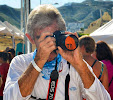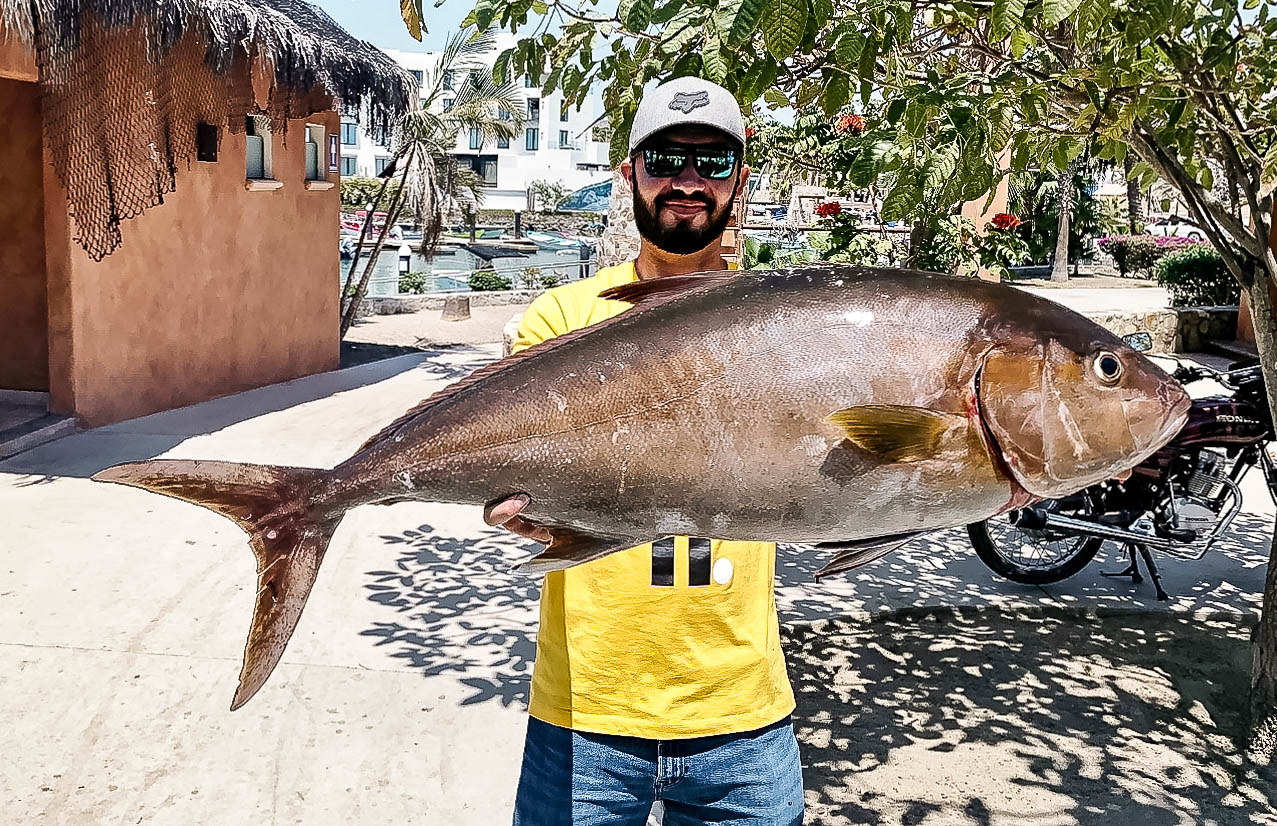Thursday, December 28, 2023
Tuesday, January 10, 2023
Wednesday, January 4, 2023
Tuesday, April 20, 2021
Friday, January 25, 2019
Saturday, August 2, 2014
Tuesday, August 6, 2013
A foot for Jesus
A foot for Jesus
Gary Graham
Gary Graham
 |
| Greg had accomplished his dream of not only catching his first striped marlin, but catching the largest fish he had ever caught as well. |
Around Christmas two years ago, I wrote an article about a very special Christmas gift, the fulfilling of an impossible dream of my friend and retired Los Barriles sportfishing Captain, Jesus Araiza, who had lost his right foot below the knee through his battle with diabetes, "Baja's Feliz Navidad spirit sparkles." To refresh your memory here is the link to that column: http://www.wonews.com/Blog.aspx?id=1565
Through the kindness and efforts of many good Samaritans, Jesus was fitted for a special prosthesis and began adjusting to the new apparatus. One of those involved in a major way was Greg Birkholz, Arroyo Grande, California, who arranged to have not one, but two "Renegade" feet manufactured by Freedom Innovations, (http://www.freedom-innovations.com/) and donated to Araiza.In early 2001 Greg, himself, was riding his new, big Harley Davidson when it traveled across a center line and collided with an oncoming truck.
“I lost the below-the-knee portion of my left leg requiring me to be fitted with a prosthesis with a "Renegade" foot that I've worn ever since. Also, every limb in my body has some metal in it," he sighed sheepishly.
Birkholz is an avid
sportfisherman in central California and upon hearing of Araiza’s reputation as
one of the finest Captains at East Cape, Birkholz expressed an interest in he
and Jesus fishing together in Baja.
I immediately began
organizing the trip and contacted Axel Valdez, Sales and Marketing Director,
Buena Vista Beach Resort, who without hesitation, agreed to provide Birkholz
and his wife, Lindy, with a week’s stay plus a day’s fishing aboard one of the
hotel's cruisers.
Always following up
on details, I visited Jesus at his home two weeks prior to the planned trip.
Everything was on
schedule.
The Birkholz's
arrived earlier this month on their very first trip to Baja and I flew down the
same day. However, after arriving, I
called to confirm the fishing trip the following day and the tone of Jesus’
voice told me all I needed to know.
“Oh, my friend,” he
began, "I have a problem with the prosthesis and think I better be 'a
lotta be careful' and stay home."
Of course I was
disappointed at the news and knew that Birkholz would be. It was impossible for
me to visit him that night but I was anxious to find out what the problem was.
I met the Birkholz’s
and left them enjoying their dinner on the porch under a star-filled sky on a
pleasant Baja night…a perfect beginning.
Although we were all
disappointed that Araiza was absent, Felipe Valdez, Manager of HBVBR had
reserved "Tres Hermanos"
for the following morning and we headed out toward the rising Baja sun. The
weather was perfect. Trolling, we spotted a few striped marlin but none took
the bait. Greg's excitement heightened with each spotting. Then suddenly we
were in the midst of a large school of cavorting porpoise and among them we
could see yellowfin tuna chasing flying fish. But as more and more boats
arrived at the melee, the tuna fled, frightened by the crowd. And still no
bites for Greg.
Then suddenly the
deckhand, Theodoro -- ironically a grandson of Araiza's -- spotted the
unmistakable sickle-shaped tail of a striped marlin pursuing the bubbling bright-colored
lure in our wake. As fast as you could say ballyhoo,
one was slipped back alongside the lure. The marlin snatched the bait and turned
away from the boat as Greg placed the rod butt in his butt-plate and plopped
down in the fighting chair.
The tug-of-war went
on for more than an hour as Greg slowly gained line, only to lose it back to
the fish. Finally at one hour and seven minutes, Greg had his fish at the side
of the boat and after taking a few photos, the fish was released. Greg had
accomplished his dream of not only catching his first striped marlin, but catching
the largest fish he had ever caught as well.
During the rest of
his stay he caught dorado, explored East Cape on an ATV with Lindy, and visited
Jesus. He discovered that Jesus's prosthesis was too large and a new smaller
one would have to be designed.
So more good
Samaritans were recruited and old ones revisited. Larry Cooper, http://www.bajaenterprises.com/, a longtime Los Barriles’ resident who is in a
wheelchair loaned a spare to Jesus. Charlene Wenger, RN, owner of the newly opened
East Cape Health Center,
http://eastcapemedical.com/how_we_got_started volunteered her staff including Dr. Enrique
Toledo Rodriquez and his assistant, Viggo Ross, to create a mold for the new
device. Paul Boe, who has been involved from the beginning, will travel to La
Paz in late August to meet with Jesus and correct the problem.
So what began as a special
Christmas gift given by countless friends and strangers to a fishing captain
who has spent 63 of his 77 years fishing in a small Baja village, has continued
‘paying it forward’, and a trip for one of the givers, Greg Birkholz, evolved
into a continuing good Samaritan adventure for both old and new volunteers who
graciously continue to donate their time and talents to help others. This is the best of the best!
Subscribe to:
Posts (Atom)






